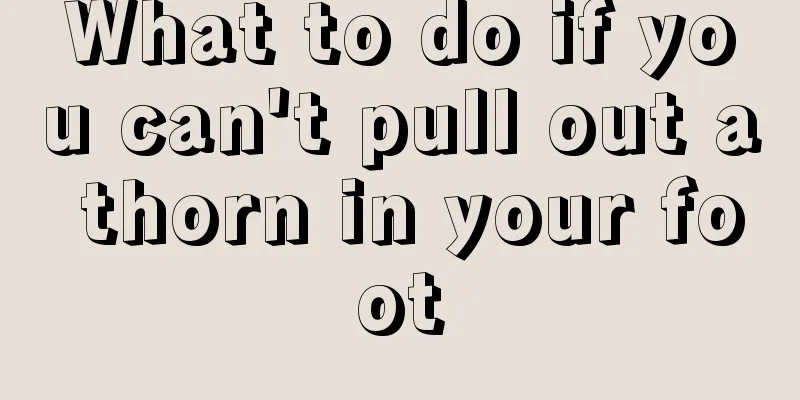Orbital wall fracture repair surgery

|
The inner wall of the human eye socket is relatively fragile, especially as people age, the skin elasticity of the inner wall of the eye socket begins to degenerate, and the inner wall is relatively thin. If you do not pay attention to protection and care, it is easy to fracture the inner wall. The site of the inner wall fracture may appear inside the orbit or in the lower corner of the orbit. Many doctors will use fracture repair surgery, but is it useful? Symptoms and Signs 1. Diplopia and eye movement disorders The characteristic manifestations of medial wall fractures are horizontal diplopia and eye abduction movement disorders. When the inner wall is fractured, the medial rectus sheath and soft tissue are embedded in the fracture gap, or the medial rectus muscle is displaced inward and adhered, restricting eye movement and causing diplopia. 2. Enophthalmos Since most of the inner wall of the orbit is weak, fractures mostly form fracture fragments, and rarely linear cracks. As the fracture fragments are displaced, the volume of the orbital cavity increases, which is equivalent to the effect of orbital wall decompression surgery. This is the main reason for early onset of enophthalmos. For enophthalmos that occurs in the late stage after injury, orbital fat atrophy is the main cause. 3. Cerebrospinal fluid leakage When the horizontal plate of the ethmoid bone is damaged above the fracture, cerebrospinal fluid leakage may occur. 4. Nosebleed In case of post-injury nose bleeding, regardless of the presence of orbital emphysema, one must be alert to fractures of the inner wall of the orbit. Because the ethmoid sinus opening is low, bleeding is easy to drain. 【Diagnosis method】 1. Diagnosis based on characteristic manifestations There is a clear history of trauma, diplopia, eye movement disorders and enophthalmos. 2. X-ray examination The fracture detection rate is low, and X-ray tomography can increase the positive rate. 3. Ultrasound The impacted extraocular muscle may be found to be thickened, curved, and with an irregular lower edge. 4. CT scan Patients with a history of orbital contusion, diplopia, and enophthalmos should be scanned in both horizontal and coronal directions. Horizontal CT films were used to observe the inner and outer walls of the orbit, and coronal films were used to observe the upper and lower walls of the orbit and the adjacent soft tissues. The inner wall of the orbit may be sunken in a triangular shape in mild cases or in severe cases the entire inner wall of the orbit may be sunken, the ethmoid sinus disappears, and the adjacent fat and medial rectus muscle also shift inward to the original ethmoid sinus. The medial rectus muscle often thickens. In case of severe orbital bone fracture, the eyeball may even move into the paranasal sinus. 5. MRI Scan It has a stronger ability to display soft tissue than CT and can better show changes in extraocular muscles, the course of the optic nerve, intraorbital hemorrhage and edema, etc. However, bone tissue shows no signal in both T1 and T2, so MRI is not as good as CT in observing bone changes. 【Treatment method】 1. Conservative treatment For patients whose CT scan clearly shows no extraocular muscle incarceration and whose orbital soft tissue herniation into the maxillary sinus is minimal, non-surgical treatment can be used. It is believed that diplopia at this time is the result of edema and inflammatory reaction, and a larger dose of glucocorticoids should be given to relieve the edema and inflammatory reaction caused by contusion and reduce adhesion formation. The use of hemostatic agents and vitamins can reduce tissue bleeding and promote the recovery of temporary motor nerve paralysis caused by contusion. Dehydrating agents may also be given to reduce interstitial edema. Functional training or repeated stretching should be performed while taking medication. A considerable number of cases can recover through the above treatment. . 2. Surgery The purpose of surgery is to eliminate diplopia and correct enophthalmos as much as possible. Surgery may be considered if the following symptoms are present ①Ocular movement is obviously impaired, and the range of diplopia is large. ② The eyeball is obviously sunken, affecting the appearance. ②The traction test was positive, with no recovery trend. ④CT confirmed extraocular muscle incarceration and extensive orbital herniation. 2. Surgical approach The most common incision for anterior repair surgery is a nasal skin incision. After the incision, separate towards the orbital rim, cut the periosteum from the orbital rim, and separate along the periosteum towards the deep orbital layer to expose the fracture of the inner wall of the orbit, free the extraocular muscles and soft tissues embedded in the fracture area, and reposition them. The orbital wall is repaired and enophthalmos is corrected at the same time, by filling the subperiosteum with autologous tissue or artificial synthetic materials, such as hydroxyapatite bone chips. When filling, make sure the implant is larger than the bone hole and placed under the periosteum. The filler can also shift the eye upward and forward. Improve enophthalmos and make it normal. |
<<: What to do if the inner wall of the mouth is broken
>>: Urticaria causes and treatments
Recommend
Nerve distribution of the cervical spine
The cervical spine area is particularly rich in n...
What is the best Chinese medicine for kidney tonification
Kidney deficiency is a professional term in Tradi...
Anti-dandruff shampoo
If you want to remove dandruff, you must choose a...
Benefits of pickled young ginger
Ginger is a very common ingredient in life and a ...
What drug is best for treating bone metastasis of renal cancer?
In the treatment of kidney cancer, generally spea...
Analyzing the hazards of common cervical cancer from a psychological perspective
Cervical cancer is a disease that seriously harms...
How can cirrhosis be cured?
Cirrhosis is a chronic disease. The causes of cir...
What are the reactions after liver cancer interventional surgery
What reactions will occur after interventional su...
What are the side effects of taking tacrolimus
The liver and kidneys are extremely important phy...
What are the causes of brain cancer?
Brain cancer refers to a malignant tumor that occ...
Left ventricular hypertrophy
Generally speaking, if we don’t go to the hospita...
What's wrong with the burning pain in my left chest
If we eat on an empty stomach, we often experienc...
What complications will occur after cervical cancer surgery? How to care after cervical cancer surgery
Cervical cancer is a common gynecological maligna...
What shampoo to use to treat hair loss?
In fact, many times the cause of hair loss is cau...
What's wrong with the twitching of the vaginal muscles
A female netizen asked that she had been feeling ...









